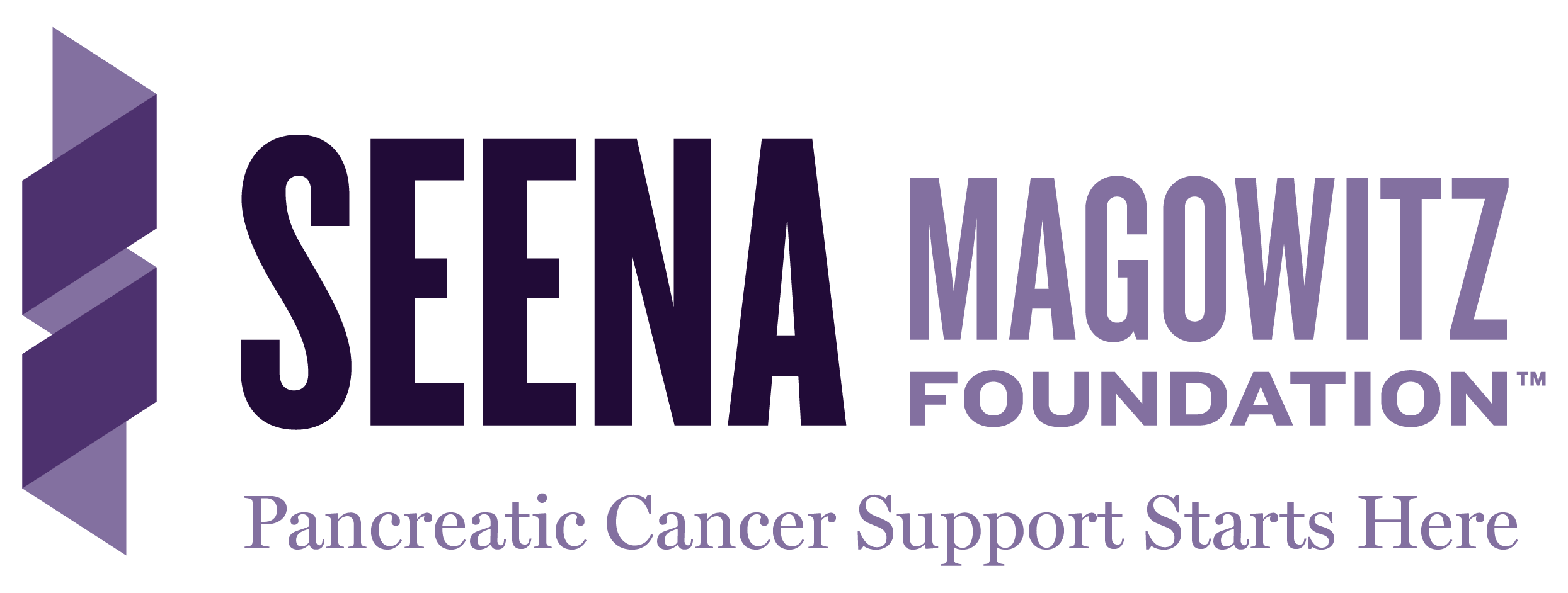What Are The Symptoms of Pancreatic Cancer?
Symptoms and Signs of Pancreatic Cancer

Symptoms and Signs of Pancreatic Cancer
Contributing Writer: Tony Subia
May 2022
In its early development, pancreatic cancer rarely presents any noticeable warning signs or symptoms of pancreatic cancer. Once the first cancer cell is produced, it can take several years before millions of cloned cancer cells form a malignant tumor the size of pecan. Since the pancreas is located deep in the abdomen behind the stomach, small tumors cannot be detected during a doctor’s routine physical exam. By the time defined symptoms are obvious and impressive, the cancer has most often has already metastasized.
Usually any early pancreatic cancer symptoms and warning signs are vague and non-specific. The symptoms can be confused with other minor, less serious illnesses such as acid reflux and stomach ulcers. The lack of impressive pancreatic symptoms is why only about 12% of pancreatic cancer is diagnosed at Stage 1 while the cancer is confined to the pancreas when surgery can be performed. It become easier to treat leading to a 5-year average survival rate of over 40%. There are many long term survivors exceeding over 15 years and well beyond. Visit our list of patients that have reached the “5-Year Milestone”.
Once pancreatic cancer has spread well beyond the pancreas, particularly to distance organs, the malignant cancerous tumor cannot be surgically removed. When the cancer gets to late stages, any treatments would likely be considered palliative to extend quality life. This is why people must be very vigilant of even the slightest symptoms or warning signs of pancreatic cancer. The earlier the cancer is diagnosed, the easier it becomes to treat.
Become Your Own Best Healthcare Advocate
Be very vigilant for any pancreatic cancer warning signs and symptoms. Know your family history of cancer. Know the risk factors of pancreatic cancer and how to avoid them. Have open constructive dialogue with your family physician. Some studies show that over 30% of potential incidences of pancreatic cancer are misdiagnosed. Consider getting second opinions. You must avoid misdiagnosis which would otherwise permit the cancer to advance to late stages when only palliative treatments can be applied.
Know The Pancreatic Cancer Symptoms and Warning Signs
> Jaundice and Dark Colored Urine
> Itchy Skin
> Blood Clots
> Onset Type 2 Diabetes
> Unexplained Loss of Weight and Appetite Loss
> Swollen Gall Bladder
> Liver Swelling
> Pain in the Upper Abdomen Radiating To The Back
> Pale, Fatty and Oily Stools That Float
> Nausea and Vomiting
> Fatigue
The General Causes of Pancreatic Cancer Symptoms and Warning Signs
Jaundice, Yellowing of The Skin, and Dark Urine.
Jaundice causes yellowing within the eyes and skin. It is also responsible for dark colored urine and itching symptoms. Jaundicing is perhaps the most noticeable sign and symptom of pancreatic cancer. Bile, which is produced in the liver is stored in the gall bladder. Bile flows through the common bile duct to the small intestine to assist in digesting fats from the food we eat. Bile also carries waste products including “bilirubin” which is the yellowish and brownish waste product that signals the jaundice symptom.
When the common bile duct becomes blocked, bile builds up in the liver and jaundice (yellowing) develops due to increasing bilirubin in the blood. Jaundice is also responsible for itching, dark urine, and fatty, pale colored stools. Jaundicing could also be caused by hepatitis which is a major pancreas cancer risk factor or by a gallstone which could block the bile duct preventing bile fluids from getting to the intestines.
The possible causes of the blocked bile duct could be caused by some of the following factors:
> Tumors in the bile ducts or the pancreas
> Tumors that have spread to the biliary system
> Inflammation of the bile ducts
> Narrowing of bile ducts due to scarring
> Gallstones
Pain in The Upper Abdomen Radiating To The Back.
Pain in the upper abdomen that may radiate to the back could be a symptom and warning sign of pancreatic cancer. Pain would occur when a tumor places pressure on the pancreas or other nearby tissue in the area. The pain could either be constant or intermittent and intensified after eating.
Digestive Problems and Unexplained Weight Loss.
When digestive enzymes are not produced naturally by the pancreas in the required quantities, digestion in the small intestine does not extract nutrients from food. Foods with high-fat content may be difficult to digest. Lack of digestive enzyme production by the pancreas can also cause pains in the mid abdomen area. See: Pancreatic Insufficiency
Nausea and/or Vomiting.
When a tumor blocks the upper part of the small intestine (duodenum), nausea and vomiting can occur particularly after eating can be a symptom of pancreatic cancer.
Pale Stool, Fatty and Floating Stool.
Many things can change stool color including medication and diet. Stools that are consistently clay-colored, caused by blockage of bile ducts can be a pancreatic cancer symptom. Stool can often have a greasy look. Pancreatic cancer will reduce the ability of the pancreas to secrete fat-digesting enzymes. This will cause stool to float.
Diabetes, Particularly Adult Onset Type 2 Diabetes After The Age of 50.
Type 2 diabetes can be both a symptom or a cause of pancreatic cancer. Read more about Type 2 diabetes as a major cause of pancreatic cancer.
Chronic Pancreatitis.
Chronic Pancreatitis is an inflammation of the pancreas. Chronic pancreatitis, which is often recurring, can be a serous symptom of pancreatic cancer. It is usually caused by excessive abuse of alcohol or is hereditary. The acute form of pancreatitis is generally caused by gallstones and is not generally linked to cancer of the pancreas.
Blood Clots.
Blood Clots in large veins, particularly in the leg (deep vein thrombosis) can be a symptom of pancreatic cancer. Symptoms can be pain, redness, and swelling in the affected leg. This condition is very serious. Any major issue with the pancreas , including chronic pancreatitis can cause increased blood clot rates in the body.
Gall Bladder or Liver Swelling,
When a tumor blocks the bile duct, the gallbladder may fill with excess bile and cause swelling of the gall bladder and liver. If this happens, the doctor may be able to find the swelling with and by applying hand pressure to search for a large lump under the right rib cage during a routine exam. Otherwise, these tumors should show in imaging tests including a CT scan or an MRI.
Fatigue and Lack of Energy.
Persistent fatigue can be attributed to many ailments and certain prescription medications. But it can be a common symptom of pancreatic cancer. It can occur at early or late stages of the disease and can be caused by both malignant and benign tumors.
Sources of Reference
America Cancer Society
Cancer Treatment Centers of America
Cleveland Clinic
Memorial Sloan Kettering Cancer Center
Mount Sinai
This content about symptoms and warning signs of pancreatic cancer is intended only for informative purposes and is not intended as medical advice or replacement of consulting expert medical opinion. Always discuss medical issues with your own physicians and medical providers.
